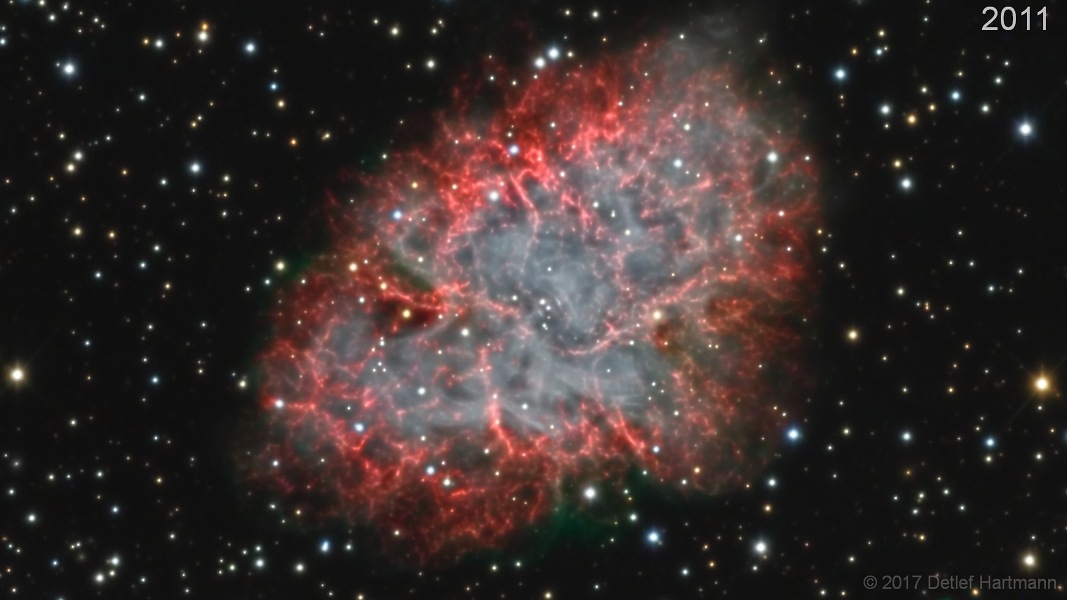Expanding Crab Nebula
29 March 2019
I was talking with a mate the other day about these Facebook posts, when I casually mentioned the one I'd done about the expanding Crab Nebula. Duh, turns out I'd never posted it! So here it is.
 |
| https://apod.nasa.gov/apod/ap180104.html |
The Crab Nebula (M1) was formed by a supernova in 1054, so a little under 1000 years ago. People saw it from the Earth. Supernovas are big bangs.
The gas and dust ejected from the exploding star formed a massive nebula with criss-crossing shock waves further interacting with clouds of hydrogen, oxygen and other gases and elements. It's a very complex nebula - a little like the Tarantula.
But the real point is that it's still expanding. So fast, in fact, that you can actually see it growing in a time-lapse taken by Detlef Hartmann over a ten-year period.
I would definitely recommend having a look at the Crab Nebula - it won't move while you're watching it, of course, even though it is expanding at about 1000 km per second. It's smallish and pretty faint, so to see it, you'll need a pretty long focal length telescope, preferably with a good wide aperture.
A Schmidt-Cassegrain would be nice to use, something like a 9.25" Celestron. It'll need the CGX equatorial mount if you're going to photograph it, or a CPC fork mount if you're just watching.
But you know, a large Dobsonian would be a fantastic way of seeing it yourself, albeit a bit smaller. And you can get a whole lot more aperture without having to shell out your hard-earned.
You'd be doing a whole lot better than me. Not only have I not photographed it, I don't think I've even seen it. From Melbourne, where I live, or even Central Victoria, where I do most of my imaging, the Crab Nebula never gets above 20 degrees above the northern horizon. Its best time is right in the new year, when it transits at midnight.
Comments
Post a Comment